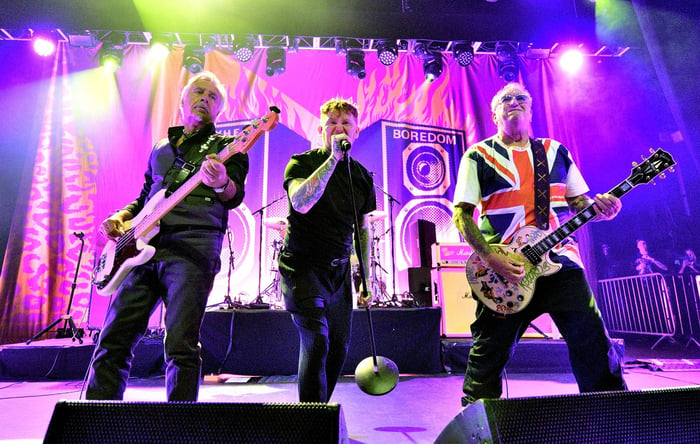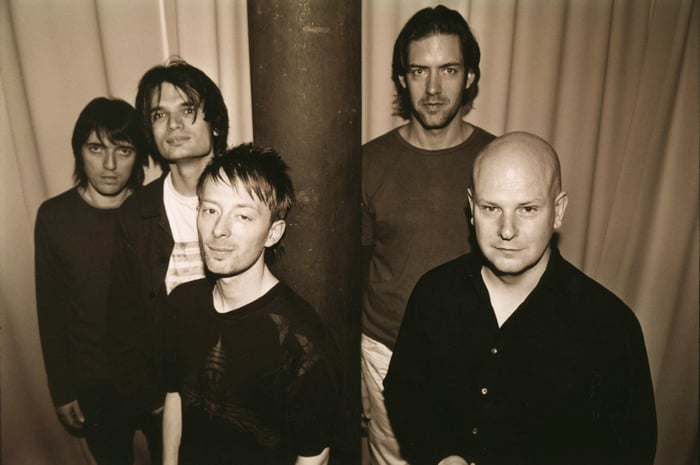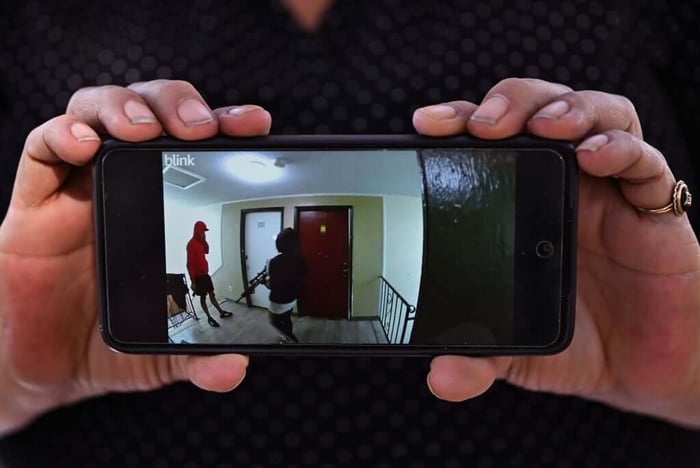
Tren de Aragua: Venezuela’s Gang Saga and America’s “Invasion” Claim
Tren de Aragua: Venezuela’s Gang Saga and America’s “Invasion” Claim
The Tren de Aragua gang stirs controversy as the U.S. labels them an invading force—unpacking the truth behind the headlines and gang realities.
For the first time since 1916, when Pancho Villa and his bold band stormed into New Mexico, America’s government is sounding alarm bells about an actual “invasion.” Only this time, it’s not a cavalry or army but a Venezuelan gang known as Tren de Aragua (TdA) that’s been cast as the new face of terror at the border. But is the story really as dramatic as Washington claims? Let’s step aboard this wild train and find out.
An “Invasion” Called Tren de Aragua: What’s the Real Deal?
The White House recently invoked the Alien Enemies Act to declare that Tren de Aragua has “invaded the United States,” accusing the gang of irregular warfare, drug trafficking, and a host of violent crimes. This Venezuelan gang, born inside the walls of the Tocorón prison, is painted as a ruthless terrorist organization aligned with the notorious Cártel de los Soles, itself a shadowy narco-terror network tied to Venezuela’s regime.
“TdA is one of the most violent and ruthless terrorist gangs on planet earth. They rape, maim, and murder for sport.”
— Homeland Security Assistant Secretary Tricia McLaughlin
Yet, the reality feels more tangled. America’s own National Intelligence Council appeared skeptical of these claims, suggesting that while Venezuela’s environment allows TdA to operate, the Maduro government does not directly control or coordinate their activities in the U.S. And when the Trump administration dismissed this intelligence, some key officials were fired—politics meeting security in a dramatic showdown.
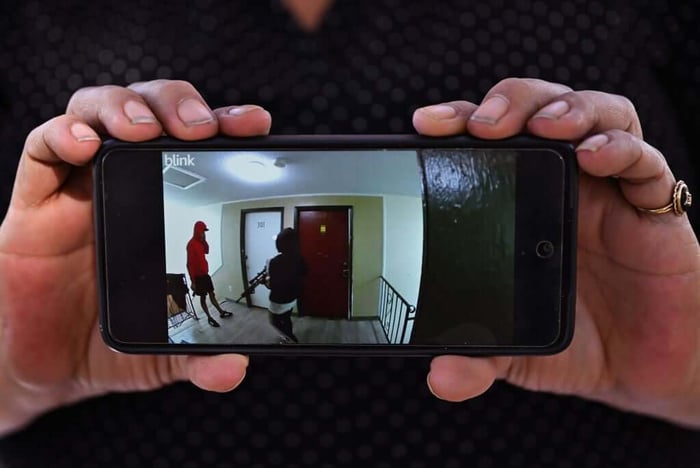
Cindy Romero holds the viral surveillance video she posted, which allegedly shows armed members of Tren de Aragua at her former apartment building in Aurora, Colorado.
From Prison Halls to U.S. Streets: TdA’s American Footprint
If you’ve kept an eye on viral crime videos, you might have seen the chilling footage from Aurora, Colorado: armed gang members patrolling a slumblock packed with Venezuelan immigrants. This scene was linked to TdA, with a fatal shooting shortly afterward. A brave Venezuelan woman who shared similar footage paid a harrowing price—kidnapped and tortured in retaliation.
Despite the gang’s violent reputation, TdA in the U.S. lacks the sophisticated coordination expected from a cartel-level insurgency. The supposed alliance with Cártel de los Soles is shaky at best, and in many ways, TdA’s American chapters appear disjointed and more reactive than strategic.
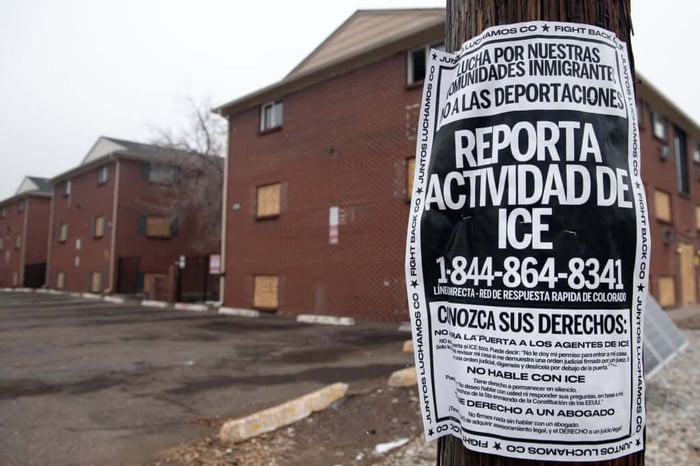
An anti-ICE flyer posted outside the notorious Aurora, Colorado, slumblock that was allegedly overrun by Tren de Aragua.
Why TdA Fits Into America’s “Permissive Environment”
The United States, with its startlingly high homicide rates, entrenched drug epidemic, and sprawling slums, offers a surprisingly hospitable environment for gangs like TdA. Our cities sometimes resemble war zones, and with prison gangs and Mexican cartels already embedded, TdA’s violent footprint is not as alien as the government suggests.
Let's be real: America’s social and political landscape, with an open border policy until recently and a faltering criminal justice system, creates fertile ground for all sorts of criminal activity. TdA’s presence is less an invasion and more a symptom of these existing issues.
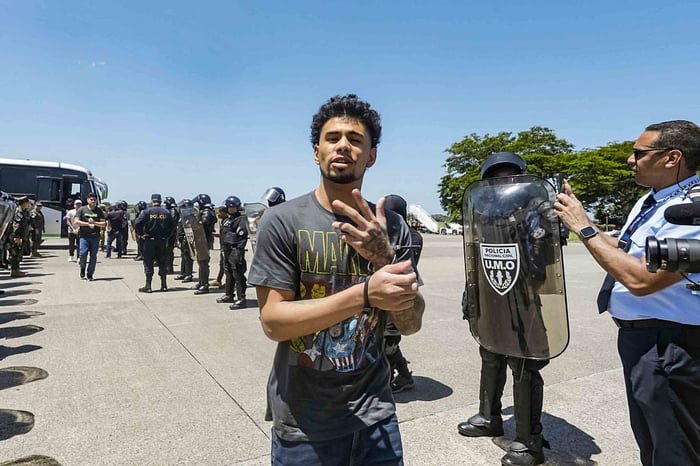
A Venezuelan man boards a flight from El Salvador to Venezuela in a detainee exchange agreement involving presumed TdA gang members.
Back to Venezuela: The Origin Story of Tren de Aragua
To truly understand TdA, we have to rewind to Venezuela’s chaotic last 25 years—a period marked by economic collapse, political upheaval, and an explosion in violent crime. Phil Gunson, a seasoned International Crisis Group analyst who’s lived in Caracas since 1999, offers invaluable perspective.
Venezuela’s descent began under Hugo Chavez, a charismatic yet polarizing leader whose revolutionary promises masked deep structural problems. Chavez’s initial social welfare gains rode on a decade-long oil boom but failed to address underlying issues like entrenched corruption and a crumbling justice system.
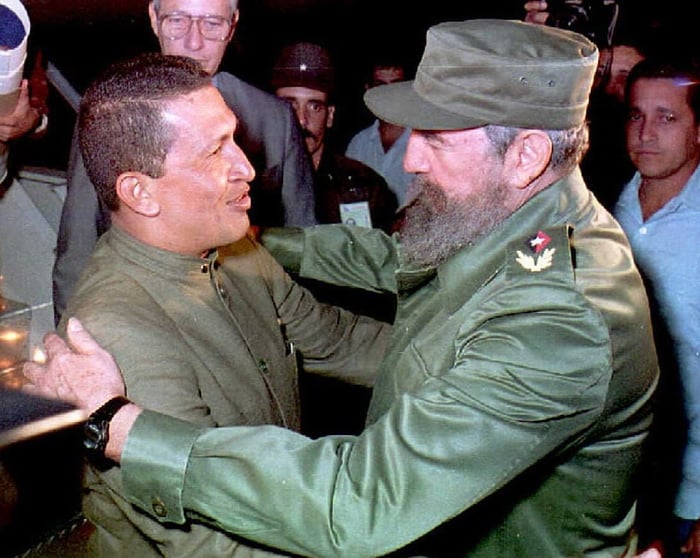
Hugo Chavez is greeted by Fidel Castro in Havana, Cuba, in 1994 after his release from prison.
From Chavez to Maduro: Venezuela’s Spiral and the Rise of the Megabandas
Chavez’s dismissive attitude toward crime—blaming capitalism and treating criminals as victims—allowed lawlessness to flourish. Kidnappings, murders, and brazen violence became daily realities, with prisons becoming battlefields where gangs like Tren de Aragua thrived.
TdA was born inside Tocorón prison, a gang that transformed the facility into a mini-city complete with discos, shops, and even a zoo, controlling parts of Maracay and extending its tentacles across Venezuela and beyond.
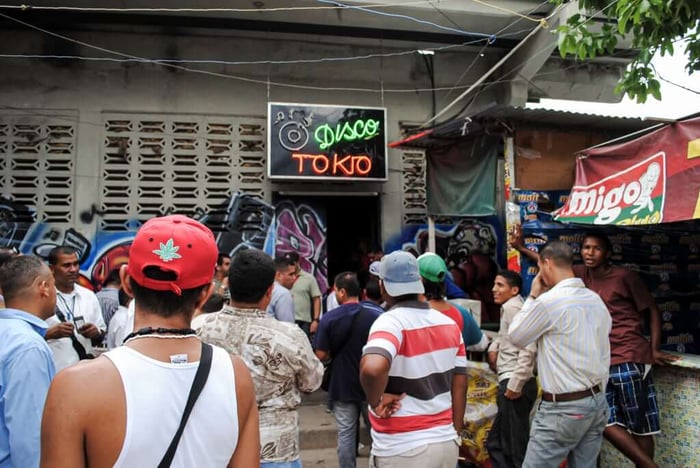
Prisoners of the then-Tren de Aragua-controlled Tocoron Prison Center line up to get into the Disco Tokio.
The Government Strikes Back: TdA’s Decline and Colombian Influence
By 2023, the Venezuelan government had enough and deployed 11,000 security forces to retake Tocorón prison, dismantling TdA’s stronghold. Though the gang leadership escaped, the operation marked the decline of TdA as a unified force inside Venezuela.
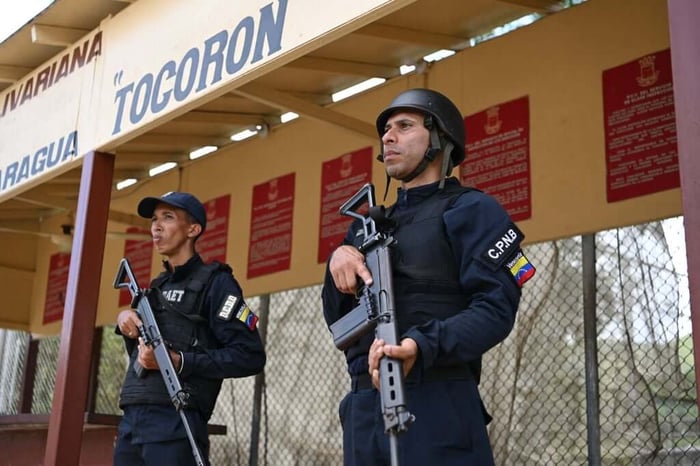
Members of the Bolivarian National Police stand guard in Tocoron prison following a government operation.
At the same time, Colombian guerrilla groups like the ELN (National Liberation Army) have stepped into the power vacuum, controlling vast swaths of Venezuelan territory and criminal operations.
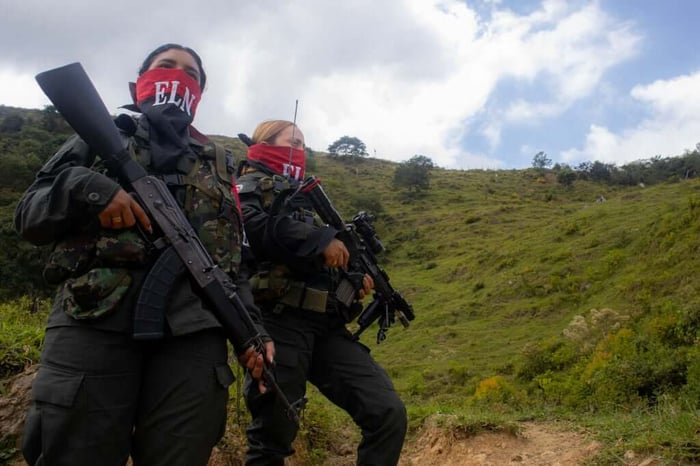
National Liberation Army guerrillas stand guard at Catatumbo region, Colombia, near the Venezuelan border.
So, Is This Really an “Invasion”?
The drama of the Tren de Aragua invasion story often overshadows a more sobering truth: Venezuela is the real tinderbox, teetering under the weight of corruption, violence, and economic collapse, while the U.S. struggles with its own internal chaos.
TdA gangbangers may be crossing the border, but they are more like refugees and displaced criminals swept along by desperation and disintegration rather than a coordinated invading force.
FAQ
- What is Tren de Aragua?
Tren de Aragua is a Venezuelan gang originating from prison networks, notorious for violent crimes including murder, kidnapping, and drug trafficking. - Is Tren de Aragua connected to the Venezuelan government?
Despite U.S. claims, evidence suggests the Venezuelan regime does not directly control or coordinate TdA’s activities. - Has Tren de Aragua invaded the U.S.?
TdA members have been found in the U.S., but labeling this as an “invasion” is disputed, with intelligence pointing to disorganized migration rather than a military campaign. - What led to the rise of TdA in Venezuela?
Economic collapse, political repression, and the breakdown of law enforcement allowed prison gangs like TdA to flourish. - Are other groups filling the void in Venezuela?
Yes, Colombian guerrilla forces like the ELN now have significant influence over criminal activities within Venezuela.
If this story about Venezuela’s Tren de Aragua fascinated you, why not bring the spirit of rebellious rock to your walls? Shop your favorite album cover poster at our store for a cool reminder of music’s power to tell stories.
 | DISCOUNTGET 30% OFF*Use code on your next order:
|
* This post may contain affiliate links, meaning we earn a commission if you make a purchase through these links, at no additional cost to you.



